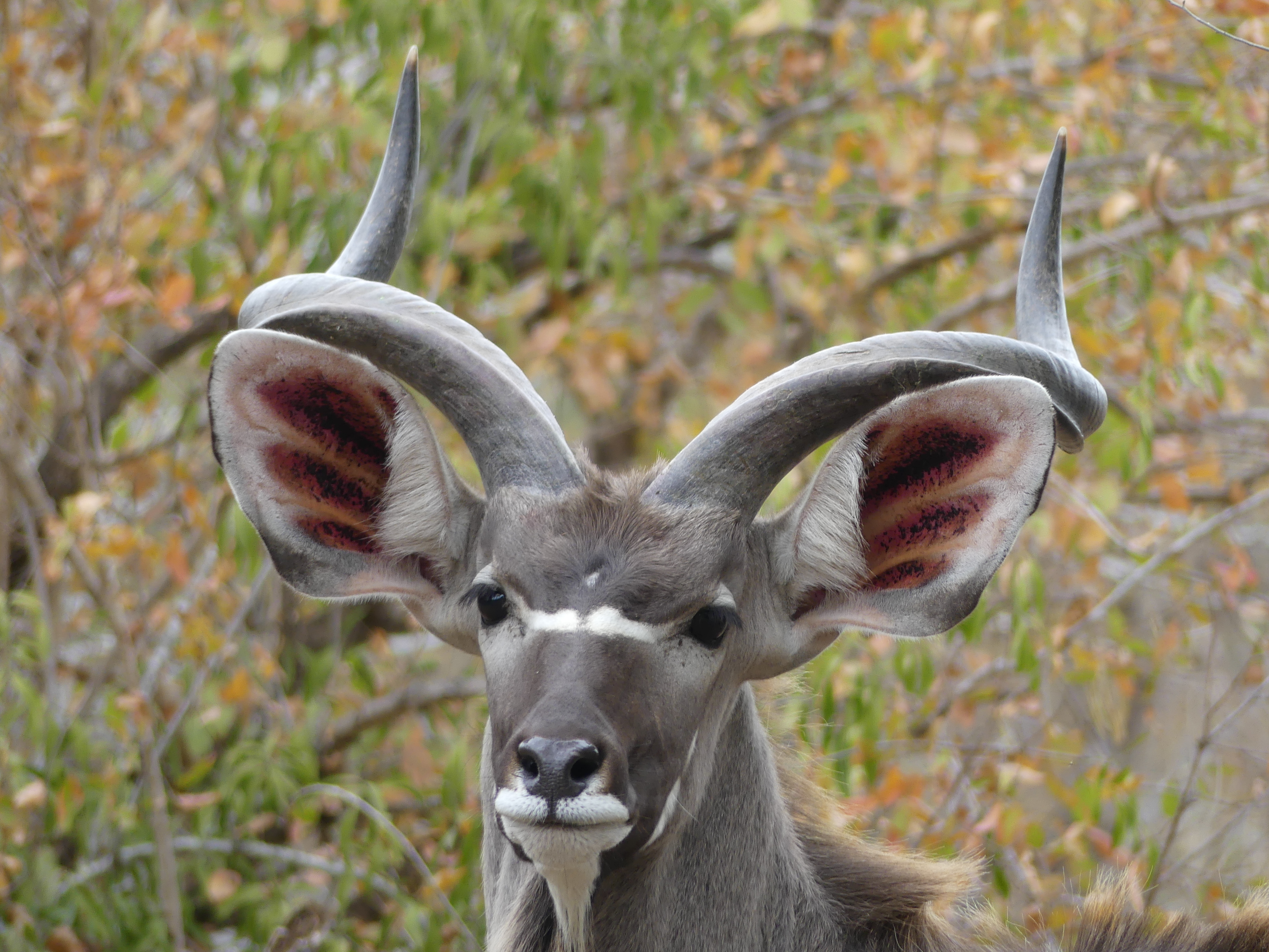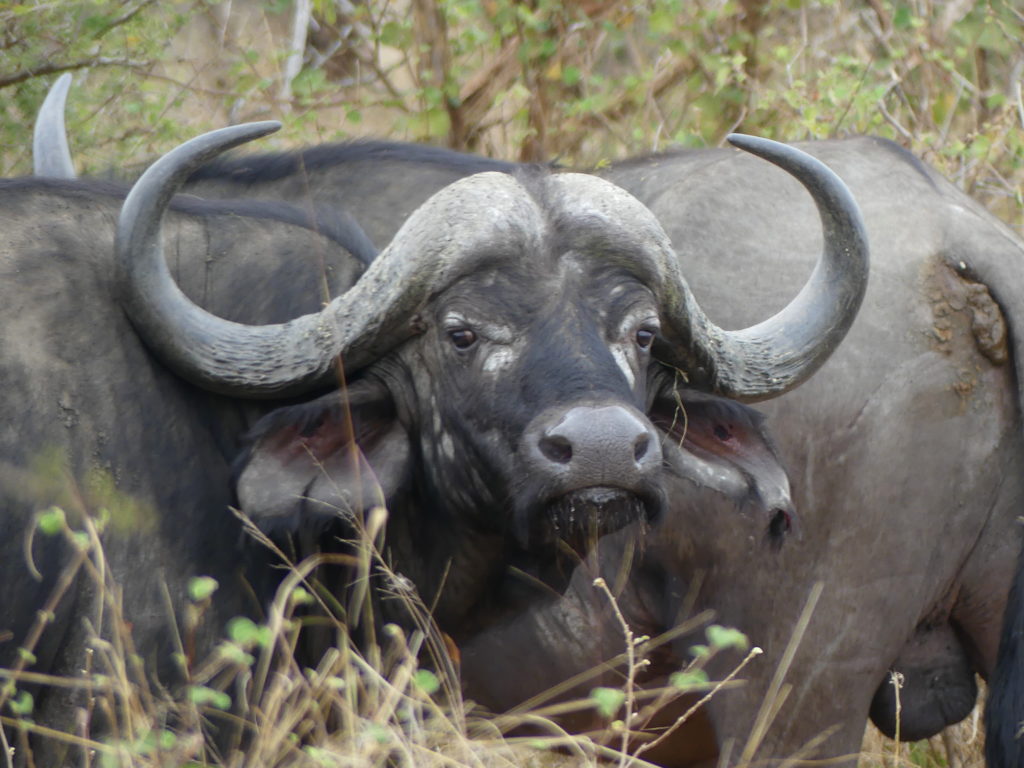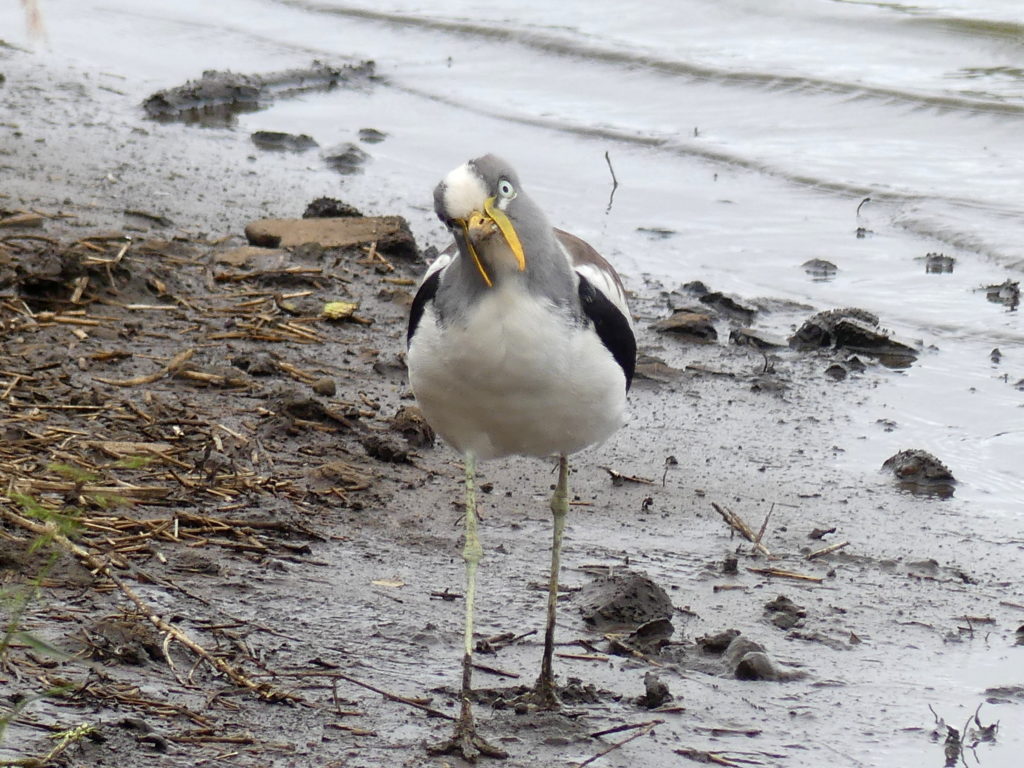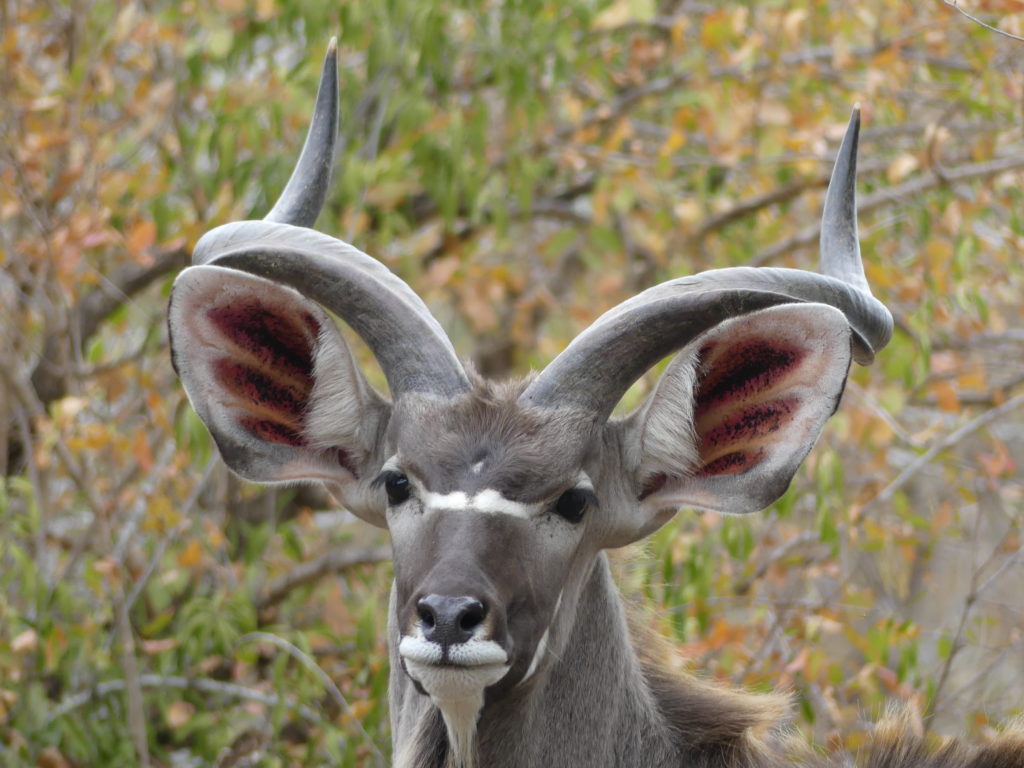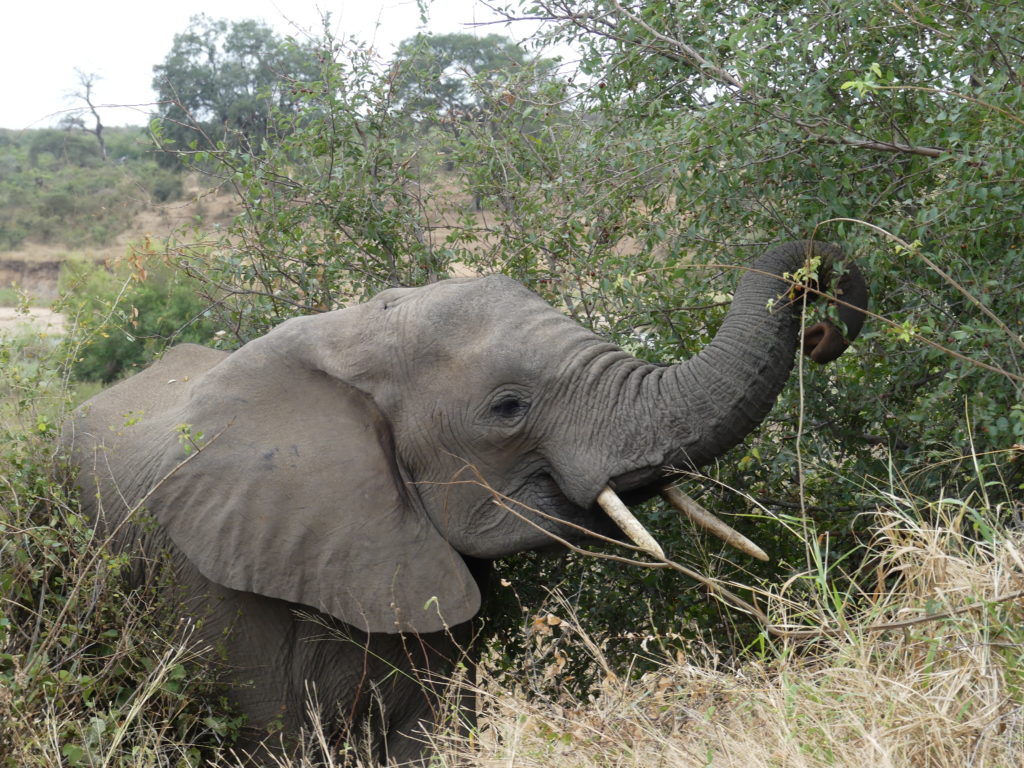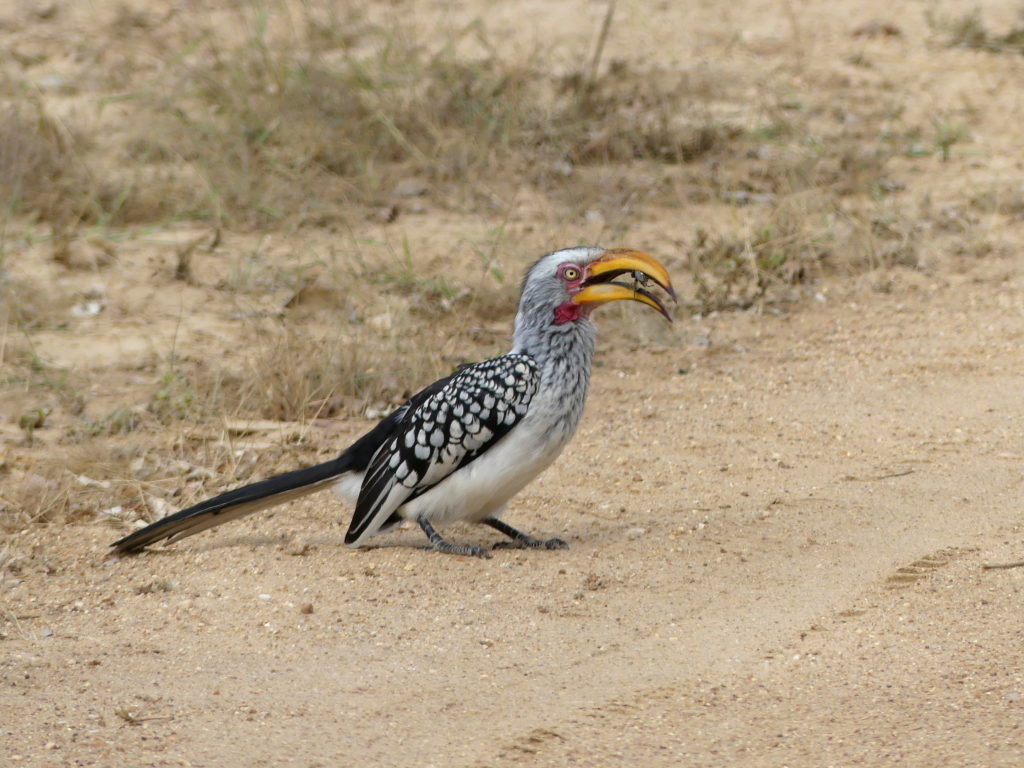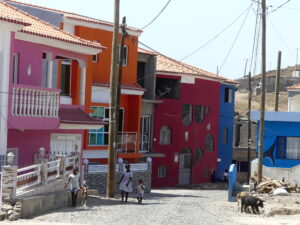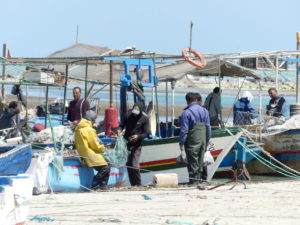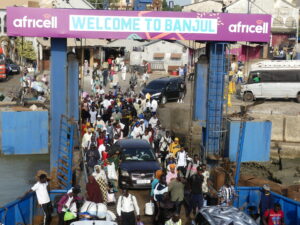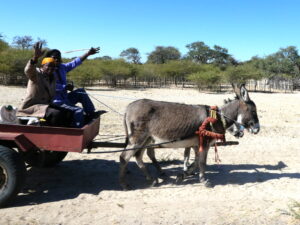In brief: Kruger National Park is a huge park that has fostered native African wildlife since the late 19th century, with some friendly faces like these.
The Kruger National Park of South Africa was established in the late 19th century by then President Kruger, one of the earliest of such conservation efforts. It has fostered native African wildlife and opportunities for viewing that wildlife since then.
So it’s a very well known and popular place to visit. It’s huge in size (about 250 by 100 kilometers) so it includes diverse habitats that support a wide variety of animal species.
The breadth of Kruger also keeps it from seeming under siege by the large number of visitors, though the main roads often clog up if a Big 5 animal is spotted.
We drove nearly all day, covered just a small portion of the park, and happily were often on our own to see these sights.
We stayed at our guides’ home just outside the Kruger border. From there, we could walk the fence along the ridge and waterway in this photo to view plenty of wildlife. Or we could just sit in their back yard and let animals visit us. Some predators are occasionally spotted outside the park borders, but the greatest threats we saw were a black mamba (a very dangerous snake) and an ostrich.
Ostriches dangerous? Ostriches can become very feisty when confronted, so residents usually carry a big stick: on seeing an ostrich, they raise the stick high with a cap atop to look tall. The stick can also help fend off other beasts if need be.
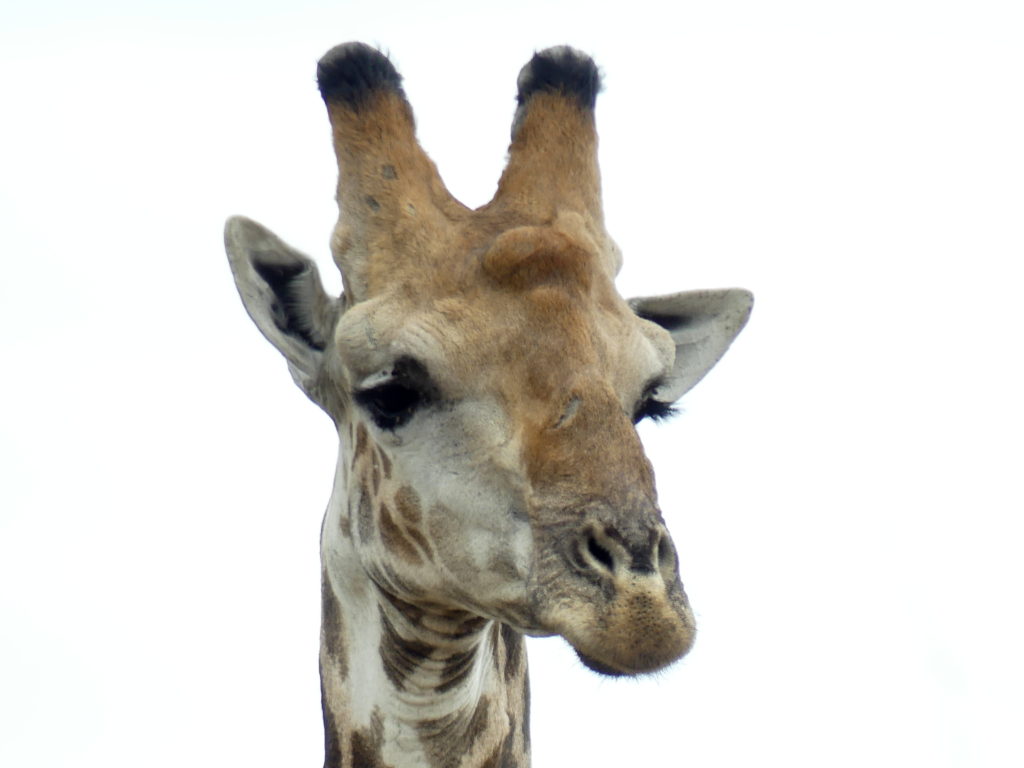
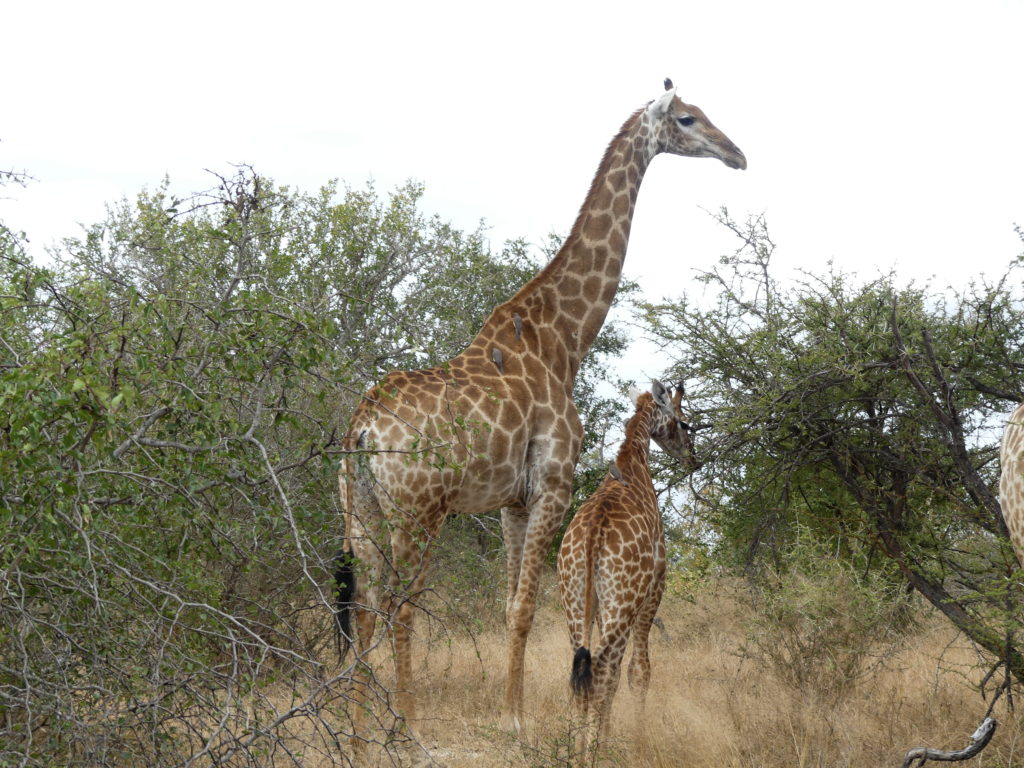
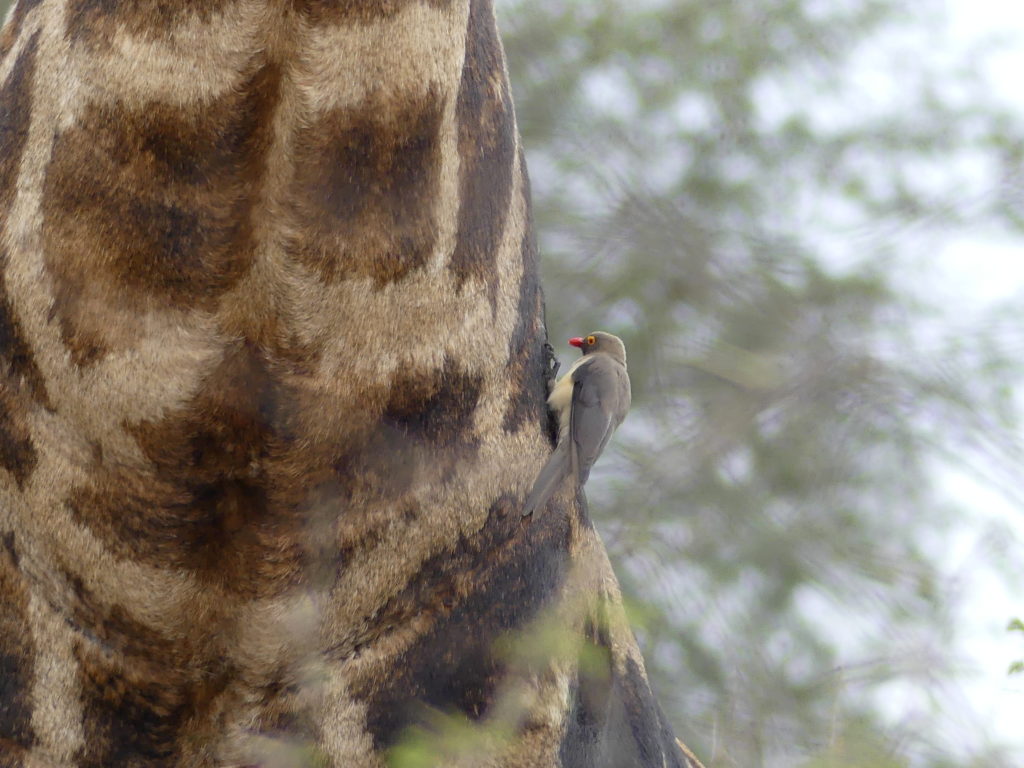
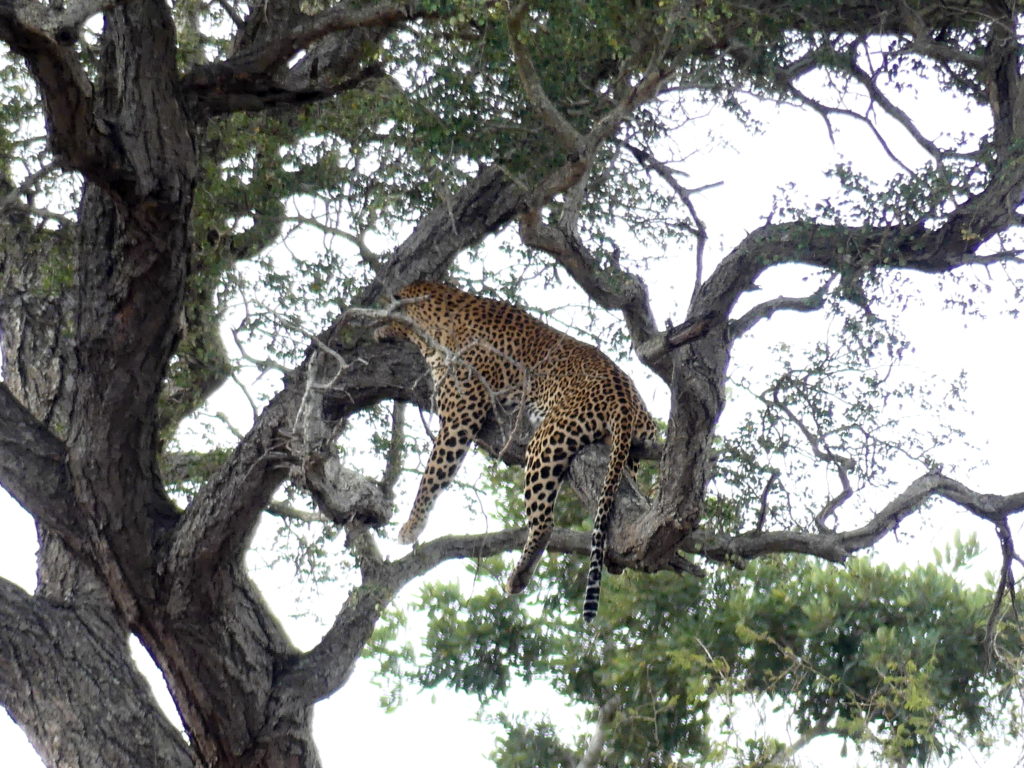
OK, not a face, but a back end. We saw two leopards, each high up a tree. One was alertly resting at the crest of a tree about 50 feet (over 15 meters) tall, on impossibly slight branches, it seemed. This one was flopped over a large branch on a somewhat lower tree, in a very relaxed posture we were told was typical of these cats.
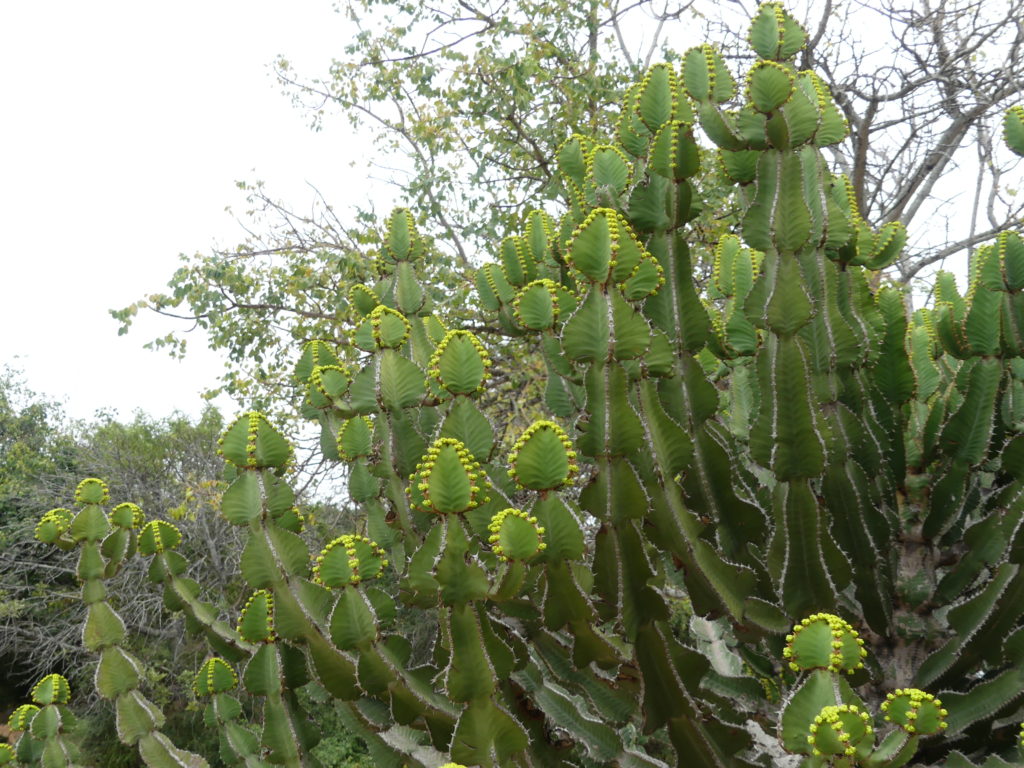
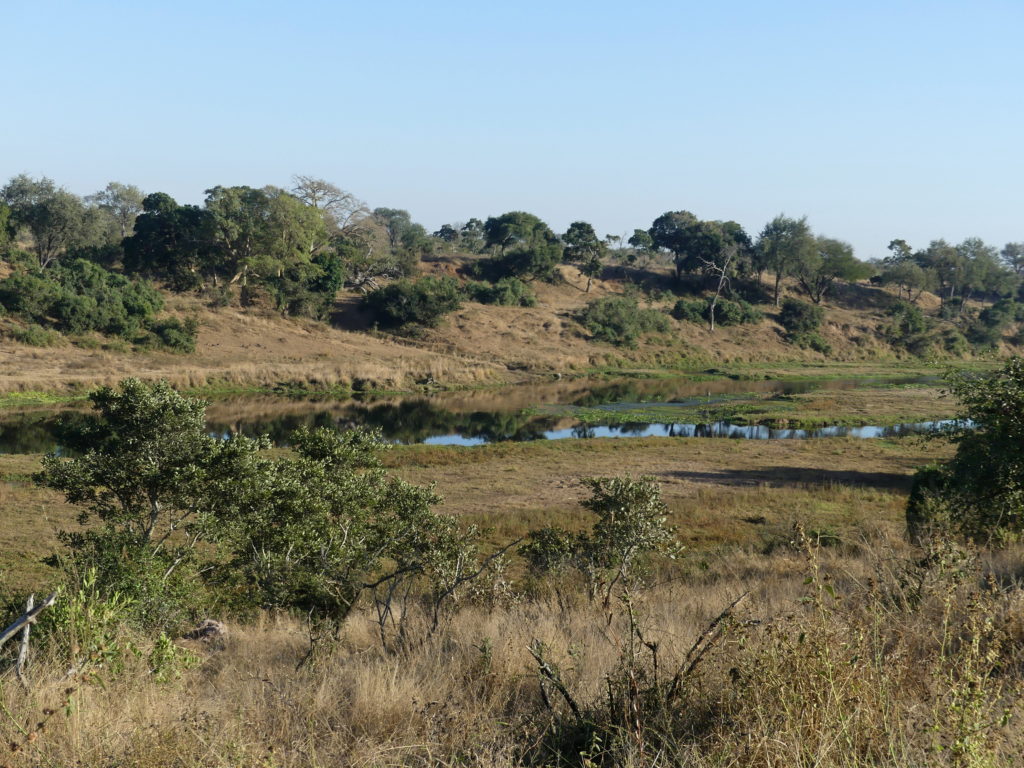
(Also, for more pictures from South Africa, CLICK HERE to view the slideshow at the end of the itinerary page.)


